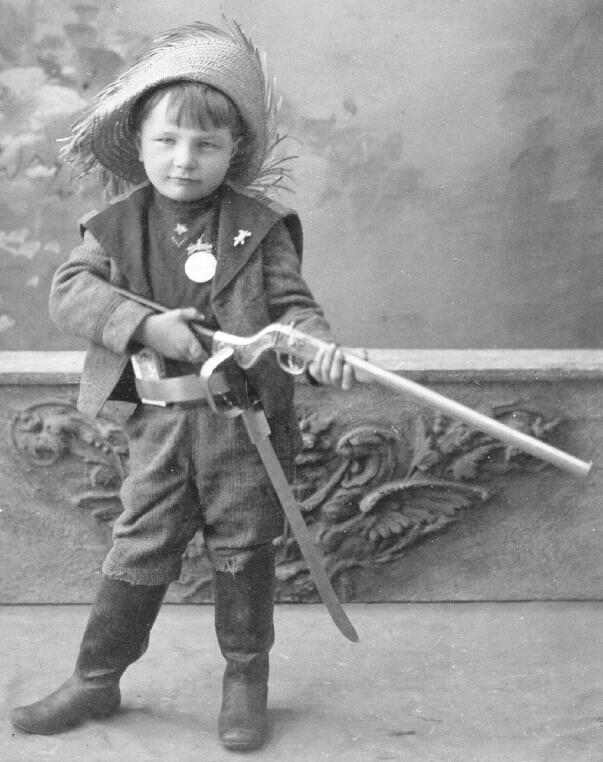
Cuban History: American Trade and Investment (1902-59)

Figure 1.--The Spanish-American War (1898-99) ended four countries of Spanish rule in Cuba, The moribund Caribbean island was at the time one of the poorest places in the Caribbean. American investment began to flow into Cuba and trade expabnded. This little boy was Henry Fischer. His father was Theodore Fischer, a prosperous American entrpreneur of German abncestry. He rushed to Cuban to buy tobacco. He brought a Cuban hat and other items which Henry is proudly wearing here. Socialist writers attacked American and European investment as exploitive. In fact, American investment brought economic prosperity to Cuba for the first and only time in its history.
|
|
Cuba and Puerto Rico had been the last remaining Spanish colonial ouposts in the Americas. As such, the Cuban economy languished as a colonial outpost of a poor, backward European country. Further problems resulted from the independence struggle which by the 1890s left the Spanish in effective control of only the major cities in Cuba. The United States during the 19th century developed trade ties with Cuba, complicated by Spanish colonial policies. Cuba at the the time of the Spanish American War was like much of the Caribbean, deperately poor. As a result of the Spanish Ameican War (1898-99), four centuries of Spanish rule ended. Cuba finally achieved independence (1902). Much expanded American investment followed. Much of that investment flowed into the sugar and tobcco industry and subsequently tourism. American investment also financed the development of natural resources like nickel. One source estimates estimates that by 1926, American investors owned 60 percent of Cuba's sugar industry. In an era of high tariffs, the United States granted Cuban exporters preferential access to the U.S. market. The United States imported 95 percent of the Cuban sugar harvest. [Thomas, p.336.]
Cuba strongly backed and supportedthe Allied war effort during World War II. It played am important role in the Battle for the Caribbean. Cuba also playrf a major role in supplying sugar to the Allied wae ecommies, substantially raising sugar production..
Castro after seizing power in Cuba constantly stressed the degree of American investment in Cuba. What he did not mention and the Cuban Government does not allow to be mentioned today is the how that investment changed Cuba. The country's moribund economy under Spain bloomed in the new free market environment. Incomes rose and Cuba developed for the first time in its history a substantial
and prosperous middle class. In little more than half a century, Cuba became not only the most prosperous Caribbean island country, but one of the most prosperous countries in all of Latin America. The era from independence (1902) to Castro's revolution (1959) was the most prosperous in Cuban history measured in terms of per-capita income and other key economic indicators. It is true that the prosperity was not well distributed, but the prosperity is undeniable. America in short brought prosperity and economic development to Cuba for the first time and what was to prove, the only time it its history.
Sources
Thomas, Hugh. Cuba : The Pursuit for Freedom.
CIH

Navigate the Children in History Website:
Return to the Main Cuban history page]
[Return to the Main Caribbean history page]
[Return to the Main Latin American history page]
[Return to the Main Latin American page]
[Return to the Main countries page]
[About Us]
[Introduction]
[Biographies]
[Chronology]
[Clothing]
[Disease and Health]
[Economics]
[Environmental issues]
[Geography]
[History]
[Human Nature]
[Law]
[Nationalism]
[Presidents]
[Religion]
[Royalty]
[Science]
[Social Class]
[Bibliographies]
[Contributions]
[FAQs]
[Glossaries]
[Images]
[Links]
[Registration]
[Tools]
[Children in History Home]
Created: 1:17 PM 7/11/2008
Last updated: 6:25 AM 2/27/2020



